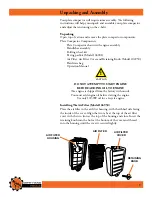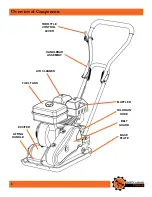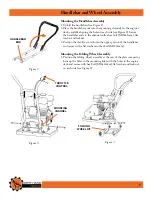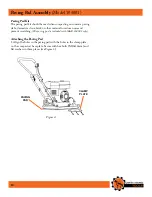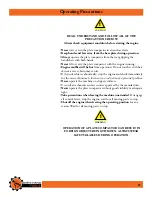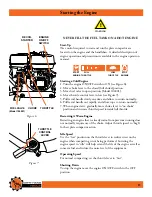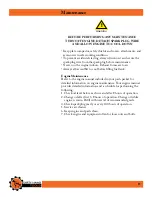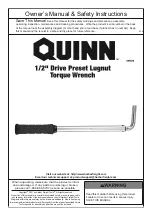
14
Operation
DO NOT OPERATE ON CONCRETE OR EXTREMELY
COMPACTED SURFACES WHICH CAUSE THE
COMPACTOR TO JUMP RATHER THAN VIBRATE
CAUSING POTENTIAL DAMAGE
TO THE PLATE OR ENGINE.
1. Start the engine.
2. Move the throttle control to fast.
3. The plate compactor will vibrate and move forwards.
4. Set the throttle to the slow or idle position when not compacting
to reduce equipment stress and preserve machine life.
5. To turn the plate compactor off, move the throttle lever to the
slow position, allowing the engine to idle for a few seconds and
then switch the engine to off.
Running the engine at lower speeds results in decreased
compaction, wear to the machine and operator fatigue.
Compacting Tips
The key to successful compacting is to allow the machine to do the
work. The operator should guide the machine, but not bear down
on the handlebar or use unnecessary force.
• Compacting will vary with ground conditions, material being
compacted and slope of surface.
• On uneven surfaces it may be necessary to apply light forward
pressure on the handlebars in order to help propel the machine
forward.
• Hold on firmly to the handlebars to control sudden lurches.
• Attach the plate pad when compacting paving stones or similar
material to avoid chipping or grinding of the surface.
• Soil conditions may be damp, but allow wet soil to dry out before
compacting. If soil is excessively dry, raising dust clouds when
compacting, sprinkle surface with water before compacting.
• A number of passes may be necessary to reach the desired
compaction level. Maximum compaction will be reached when the
machine constantly kicks back.
Do not stop the machine by moving the choke, which can cause
engine backfire or damage.
!
WARNING







